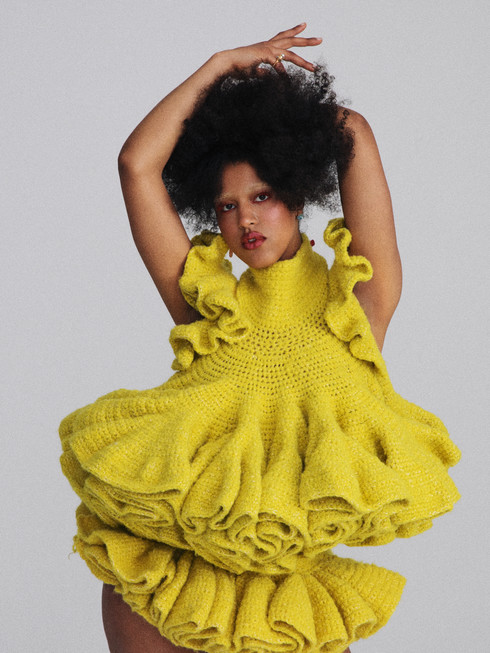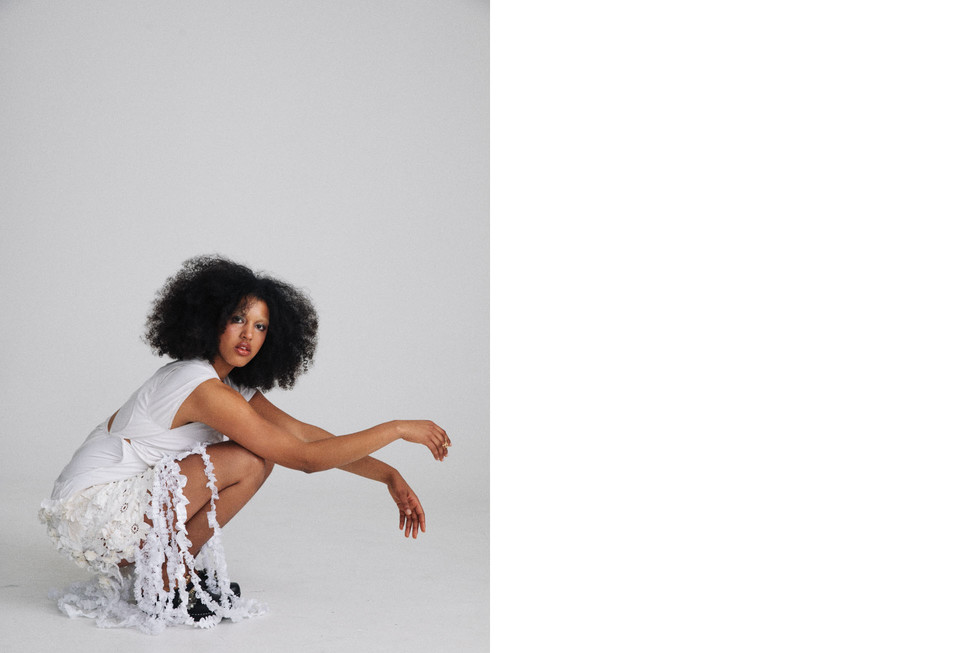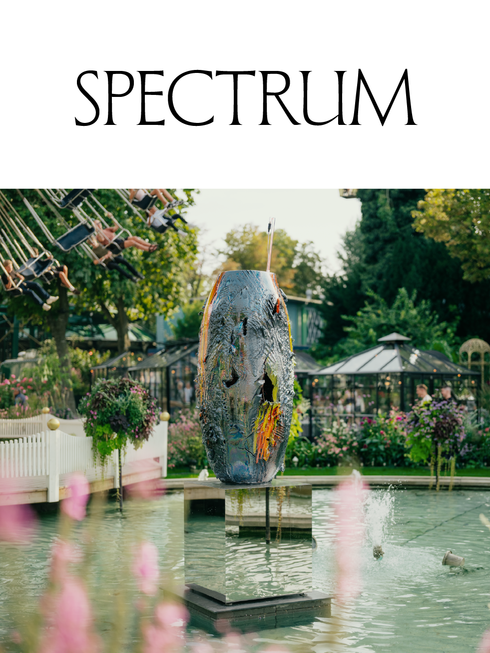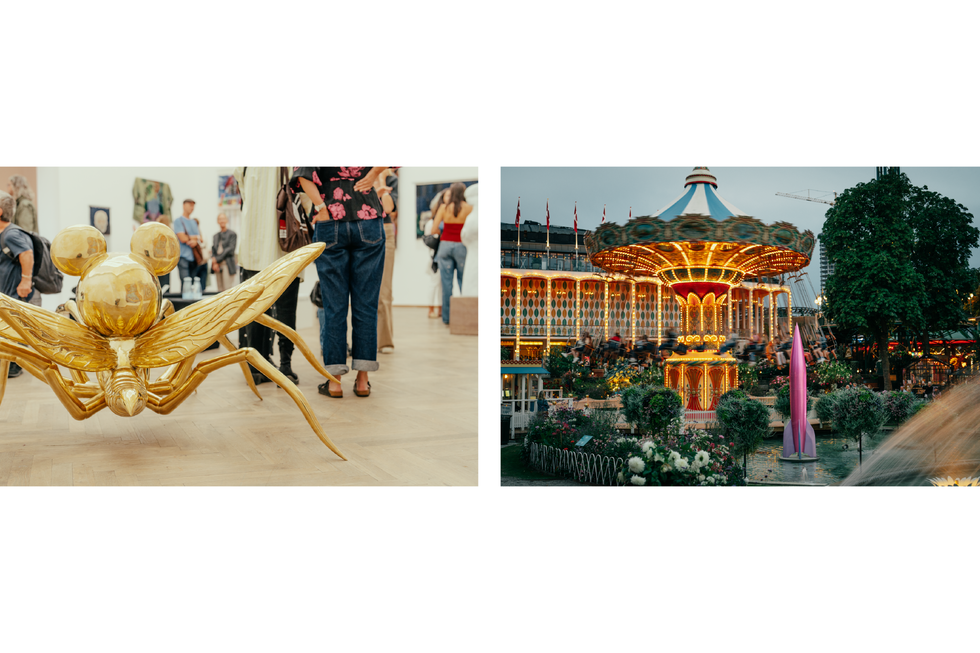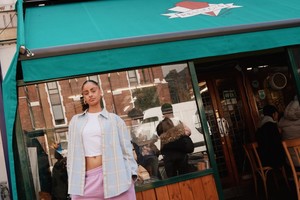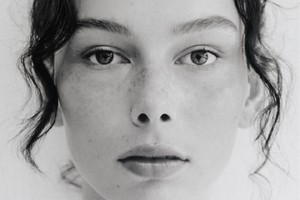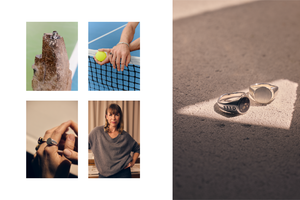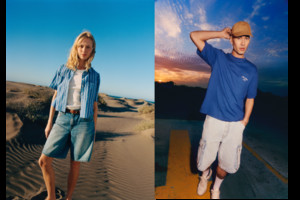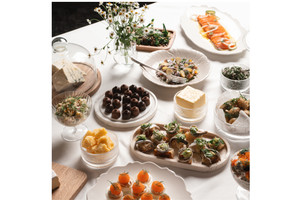Diane Emerita on Music, Memory, and Momentum
Written by Sandra MyhrbergAfter a whirlwind year filled with praise from major media outlets, airplay on P3, and a standout performance at Way Out West, singer-songwriter Diane Emerita finds herself both exhilarated and grounded. Her music—intimate, conceptual, and often rooted in family and memory—has resonated widely, yet she still writes songs on her mother’s piano and juggles her music career with a mathematics degree.
Sandra: You’ve had quite a whirlwind year—praise from major media, airplay on P3, and a performance at Way Out West. How has this rise affected you, both creatively and personally?
Diane: It is fun and scary and interesting. I am taking my time to process it all. I still can't believe I have done certain things like having a song of mine in the game SIMS. But then most of the times I am just myself and not my “artist persona” so really I am quite calm and don't think about it too much. I study a bachelor in maths and besides music that pretty much fills up my thoughts. Creatively, I am just excited that people seem to get something out of my music and buy tickets to my shows and that I get to see how far the music can reach. I remember a line in Frank Ocean's song Futura Free saying “Play these songs, it's therapy momma, they payin' me momma, I should be payin' them” and I resonate with it a lot. I get so much out of reflecting my own thoughts and emotions and expressing them through my music that mostly I am just thankful that I get to do and make a living out of it as well. So then, I write and sing to find out what I have to say.
S: Your music feels deeply personal, often rooted in storytelling. “Indigo Bruised” is another collection of songs based on stories about your family. What draws you to these themes, and what can listeners expect from this EP?
D: I looove storytelling. I like to intentionally work with concepts because it somehow becomes a challenge for me to master - a problem solver. Music and the visual expressions, including styling and performances become so much easier for me to coordinate when they have a connected concept. I get emotionally invested. Also I think it is quite refreshing working with themes because it is easier for me to understand where I start and where I draw the line and move on to the next project. For instance “Indigo Bruised” has four tracks in it because I wanted to dedicate one song to my mom, sister, father and brother, simultaneously as making each symbolise a season as well. But there are only four seasons, so that is how many songs I made. Listen to “Indigo Bruised” and see if you can guess which song is what season. (Either way you are right)
S: You’ve continued working with producer Hampus Norén, who also contributed to “Traveling Forever.” What is it about this collaboration that keeps you coming back? How has your sound evolved together?
D: I think I like the way how he challenges me to let go a bit. To see it all more as a game than something serious. Well I still take music very serious because it makes me feel so much, but it has definitely been a nice journey to allow some imperfections into creating the sound of my songs. There is a clear seriousness to the songs I released before “Travelling Forever”. Hampus brings in an aspect of playfulness and “dirt” into the productions. He likes for it all to not sound all too clean and perfect, which I think helps giving the music emotional depth. And also it takes a long time for me to let someone into my creative space, so he has also become a comfortable teammate to keep because he know gets me. I know what I want my music to sound like and I always have very clear references for the production if I am not producing myself and then he always manages to give me more than I've asked for, which is great. And then we have our incredible mixer Sven Johansson who just elevates everything we do and gives the sound the last needed edge.
S: Despite all the buzz, you still write your songs at your mother’s piano. Is that a grounding ritual for you? What’s your songwriting process like—does melody come first, or do lyrics lead the way?
D:I have a lot of siblings, so my mother's place is a very lively house. Most of all I love playing on her piano because I get to disappear into my own bubble in the way I always have done even when I was younger and was still living there. So I float away into my bubble, but life around me kind of goes on. My songwriting process is a long one, I play the piano and after some time, perhaps weeks or a day or a second lyrics arrive. But the music, the playing always comes before the singing starts. I also love when some of my siblings start singing to along to what I am playing. You could indeed call it a grounding ritual, it gets my creativity flowing. I feel like Sampha's song “No One Knows Me Like The Piano” when I play.
S: You’ve described Malmö as a creatively thriving scene. How has the city and its artistic community influenced your work?
D: Malmö feels warm and open both in climate and culture of the people. I really love the fact the artistic community is inclusive and welcomes everybody. Like there is no need to feel like you are competing with other artists for attention of others, everyone kind of supports everyone. It sounds very cheesy but ultimately I find it to be a very respectful, warm and vibrant place. I work mostly in Stockholm when it comes to music, so when I am at home in Malmö I get to chill and study which for me has been such a necessary place of refuge.
S: Your handmade “ugly cups” have become something of a signature. What sparked the idea, and do you see this kind of hands-on creativity as an extension of your artistry?D: My mom has had ceramics as a passion of hers for as long as I can remember. So I used to come along to her studio and just spend hours exploring clay without ever really properly learning how you throw or build in a traditional way. That's were the idea came from to make “ugly cups” when I started picking up ceramics again in my own studio in Malmö last year. To make cups not because they would be perfect, but make them because it was fun. It is a nice way to show appreciation for the people that listen to my music, because I sold them very cheap and they were very much made with love and care - each exemplar was unique. But making ceramics merch was such a long and intense process taking several weeks for cups to get done. So I am taking a small break from it for now before starting producing cups again for when I release my album next spring.
S: “Indigo Bruised” is described as both ‘driving and soft’ with intricate production details. How do you approach this contrast in your music—balancing energy with emotional depth?
D: Most of my songs include the first take or single takes of me singing. Which basically means that I like to keep the first impressions that I gave when singing the songs for the first time in a microphone. I think that gives my lyrics emotional depth. I like the idea of honesty in it, surely I am quite the perfectionist at times and also can try to take the same line of singing a thousand times to make it as perfect as I think it can be. But ultimately and most often I chose to go with the first time I recorded a song, it becomes symbolic, like a picture of the time I find myself in at the moment. But both Hampus and I strive very much towards good dynamics in the sound of the songs, I want there to be a driving pulse, he wants to feel the honesty in my voice. And Voilá a diane emerita song is made, soft and driving.
S: With so much momentum behind you, what’s next? Do you see yourself experimenting with new sounds or collaborating with other artists in the near future?
D: I am making an album right now, and it is almost done, but I also haven't written most of the songs yet. Which is funny. But in my head it is very clear that “what is next” will always be me exploring my musicality and effectively the time of my life when I write it. So basically I am just making a soundtrack to my own life. So yes there will be new sounds and collaborations. For this new album I am seeing a lot of colour in the sound (whatever that might mean) and a dancing pulse. And I am counting with at least two, three featuring collaborations. But like I said, I now need to go and actually let the ideas out of my head and make them listenable to others. I am sure everything will fall into place.
S: If you could collaborate with any artist—living or dead—who would it be, and why?
D: Uh nice and hard question. Too many to choose from, and the list is always changing. But I'll give you a cute short list:
- Little Simz, because she is the greatest rapper of all time
- Obongjayar, because of the way he sings
- Jeff Buckley, I liked his lyrics
- Robyn, because I love to dance to her songs
S: Finally, what’s something unexpected
D: I really like libraries, I think they should become the new supermarkets.

